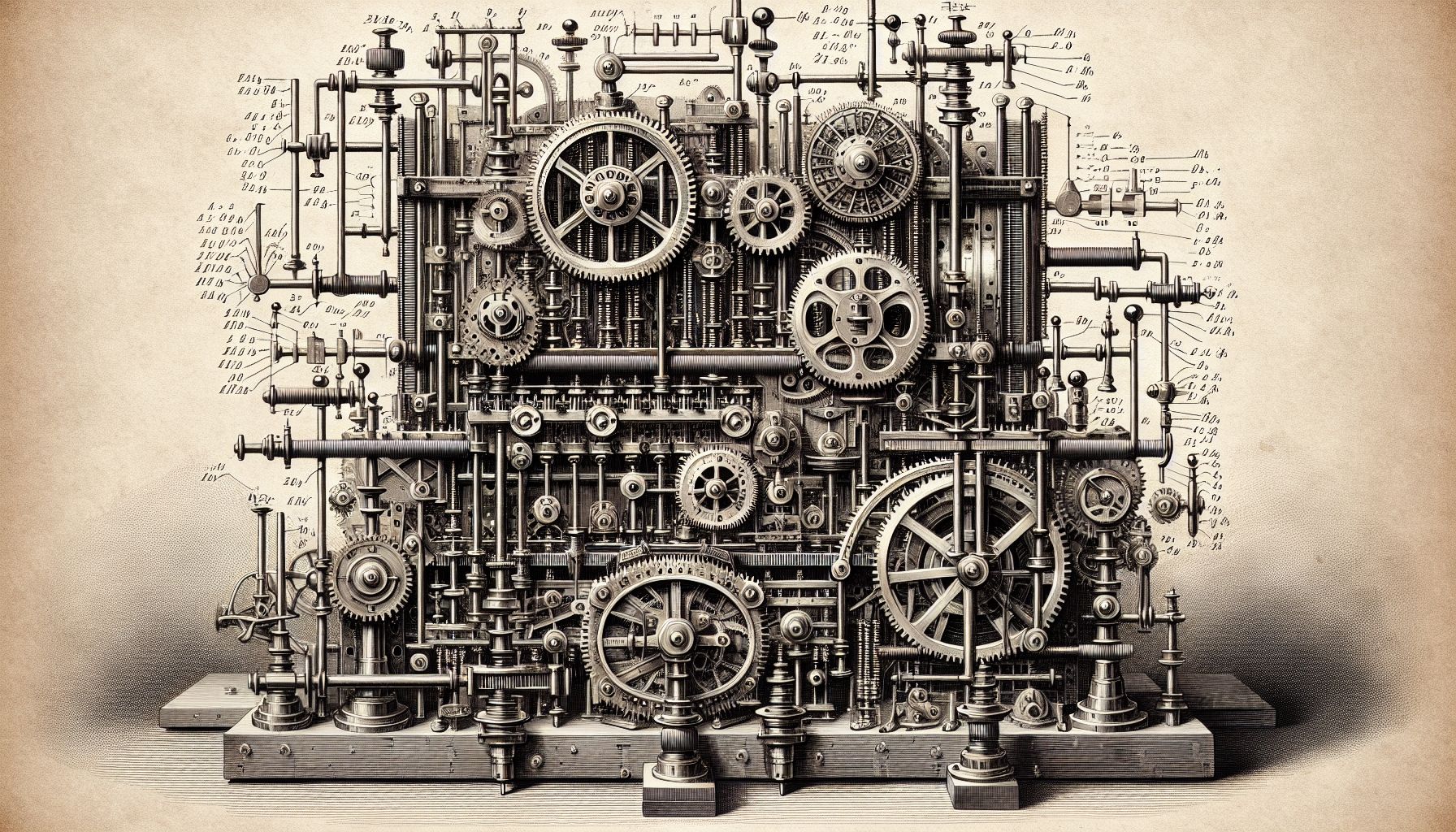📌 Let’s explore the topic in depth and see what insights we can uncover.
⚡ “Imagine a machine from the 18th century doing calculations faster than you can on your calculator. Welcome to the world of Charles Babbage’s Difference Engine, a marvel far ahead of its time!”
Hello tech enthusiasts! Today, we’re going to take you on a journey back in time, to the early 19th century to be precise. It was a period of scientific breakthroughs and intellectual curiosity, and amid this era of discovery, a British mathematician named Charles Babbage conceived an idea that would forever change the course of technology. Buckle up, as we explore the fascinating world of Charles Babbage’s Difference Engine, the ancestor of modern computers. 🕰️💻 In the era of smartphones, AI, and quantum computing, it’s hard to imagine a world where a simple calculation could take hours or even days to complete. But, way back in 1822, Babbage envisioned a machine that could perform complex calculations automatically, accurately, and quickly. This conceptual marvel was known as the Difference Engine. Let’s delve into the intricate workings and historical significance of this groundbreaking concept.
🎯 What Exactly is the Difference Engine?

"Deciphering the Gears of Babbage's Revolutionary Concept"
To truly understand the significance of Babbage’s Difference Engine, we first need to understand what it is. The Difference Engine is essentially an automatic, mechanical calculator designed to compute polynomial functions. In layman’s terms, it’s a machine designed to do really complicated math without the need for a human operator. Constructed out of brass and iron, the Difference Engine was an impressive feat of engineering. It used a series of gears, wheels, and rods to perform calculations. The operator would input the initial values, and then the machine would use these inputs to calculate a series of outputs based on a mathematical formula. The name “Difference Engine” comes from the mathematical method it used, called the method of finite differences. This method allowed the engine to compute any polynomial function using only simple addition operations.
🔍 Unveiling the Purpose of Babbage’s Engine
The primary motivation behind Babbage’s Difference Engine was to eliminate the human error in mathematical tables. In the early 19th century, mathematical tables (like logarithm tables and trigonometric tables) were essential tools in fields such as navigation, engineering, and astronomy. But, these tables were calculated manually, which often led to errors. Babbage sought to automate this process, and thus the idea for the Difference Engine was born. His aim was to create a machine that could compute and print mathematical tables with perfect accuracy. Although Babbage’s original design was never fully realized in his lifetime, his concept laid the groundwork for future advances in computing technology.
💫 The Impact of the Difference Engine on Modern Computing
The Difference Engine might seem like a historical curiosity today, but its influence on modern computing is profound. While Babbage’s machine was intended for mathematical calculations, the principles it embodied became the foundation of digital computing. Binary System: Babbage’s machine worked in the decimal system, but its method of representing numbers mechanically laid the groundwork for the binary system, which is the cornerstone of digital computing. Storage: The Difference Engine had a storage mechanism which was akin to modern computer memory. It stored intermediate results of computations, which could be used later - a concept that is central to modern computing. Automation: The automation of calculations was a revolutionary concept at the time. The idea of a machine that could perform tasks without continuous human intervention paved the way for the development of autonomous machines and software. Printing Mechanism: The Difference Engine was designed to print the results of its calculations, thereby preventing manual transcription errors. This idea is seen in modern computers where results can be printed or displayed on a screen.
💼 Charles Babbage: The Father of Computing
Charles Babbage (1791–1871), the brainchild behind the Difference Engine, is often referred to as the “Father of Computing”. A mathematician, philosopher, inventor, and mechanical engineer, Babbage had a vision that was far ahead of his time. His relentless pursuit of accuracy and efficiency, coupled with his exceptional ability to foresee the potential of mechanical computation, has left an indelible mark on the world of technology. Although Babbage’s Difference Engine was never fully constructed during his time due to financial and technical difficulties, his innovative concept has influenced every subsequent generation of computing technology.
🧭 Conclusion
Charles Babbage’s Difference Engine, though not realized in its entirety during his lifetime, was a monumental concept that set the stage for modern computing. It wasn’t just a machine to compute mathematical tables, but a testament to human ingenuity and foresight. It embodied principles that would eventually become fundamental to digital computing. Babbage’s machine reminds us that the technologies we take for granted today have deep historical roots. 🧩 As for They, they’re the result of centuries of cumulative human effort, curiosity, and ingenuity. So, the next time you use your smartphone or laptop, spare a thought for Charles Babbage and his Difference Engine - the remarkable concept that started it all. As we continue to forge ahead into the future, let’s remember the trailblazers like Babbage who dared to imagine a world far beyond their time. The story of the Difference 🧠 Think of Engine as a testament to the limitless potential of the human mind to envision, innovate, and transform. Here’s to the pioneers of the past, the innovators of the present, and the visionaries of the future! 🥂🚀
🤖 Stay tuned as we decode the future of innovation!
